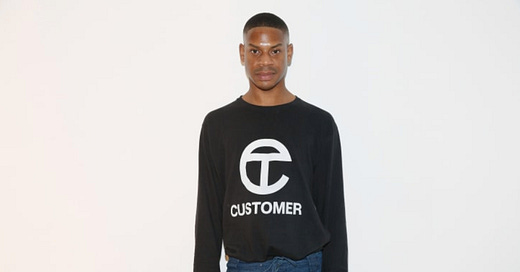I write weekly newsletter about how the new forms of social, cultural, and environmental capital change brand strategy. If you enjoy this issue, please like it above, share it with anyone you think may find it useful, and subscribe below:
The reverse pyramid model is a revolutionary switch of the relationship between availability of something and its aspirational value. The model breaks from the established business and brand logic as it generates access to desirable products, taste, knowledge, and community in order to create economic value. This model powers growth in the de-industrialized markets.
The reverse pyramid model is not to be confused with the mass model, which relies on cost-effective production, wide distribution and economies of scale to saturate the market with a product. Accessibility of the reverse pyramid is social and cultural as much as it is economic.
The model is also not be confused with premiumization, which is often used by brands in order to add codes of status to a mass product in order to differentiate it from store brands and charge more for it.
The reverse pyramid model subverts the classic pyramid, where the social and cultural value is created at the top and then it trickles down to the base of the pyramid. The pyramid’s base is the most economically accessible, but the most creatively diluted.
For example, the traditional pyramid model is used by a number of luxury brands that at the top of the pyramid have ateliers, haute couture or artist-designers that create a brand myth. Towards the bottom of the pyramid, this myth exists in the form of an economically accessible key chain or a scarf.
In contrast, the reverse pyramid is energized by accessibility of its base. Base products are the same as the products at the top (example is the Telfar bag a.k.a the Bushwick Birkin). To grasp how thoroughly this reverses the establish economic logic, consider this: some hundred years ago there were a couple of thousand car owners. Owning a car - any kind of car - was a differentiator. Today nearly everyone has a car (or several) so the differentiator is a car brand.
Both traditional and the reverse pyramids share the same mechanism of drawing people deeper towards the tip of the pyramid. The traditional pyramid uses economic capital and transactions of increasing volume and value to get them there. In contrast, the reverse pyramid uses taste and cultural capital and social exchanges with increasing meaning. Direction is towards becoming a brand insider and moving - thanks to one’s own interest or passion - from everyone to a community and from mass to a deep cut.
The reverse pyramid model increasingly used by modern brands that sprung up around a specific activity (running, biking), behavior (cooking, decorating), or a taste regime (coffee, aperitifs).
Modern brands use their products as an entry point into a brand, but the real brand benefits happen with deeper brand engagement and insider knowledge.
Keep reading with a 7-day free trial
Subscribe to The Sociology of Business to keep reading this post and get 7 days of free access to the full post archives.




